A baby milk bath is one of the most beneficial things you can do with your breast milk. The benefits of a milk bath are definitely worth putting aside a few ounces of breast milk to bathe your baby in.
If you didn’t know already, breast milk goes beyond feeding. There are tons of different ways to benefit from breast milk for both you and your baby.
And, if you also don’t know, a baby milk bath isn’t just for adorable baby photos, they’re great for keeping your little one’s skin healthy and soft. And, if you’re up to it, you can get cute baby pics and all the wonderful benefits of a baby milk bath at the same time.
Learn all about the benefits of milk bathing and what breast milk can do for you and your baby right here.
Benefits of a Baby Milk Bath
There’s lots of studies, as well as evidence that proves breast milk can treat several different skin conditions. There’s always the option of placing breast milk directly on your infant’s skin, although one of the most beneficial ways to use breast milk is by bathing your baby with it.
Here are some ways that a breast milk bath may benefit your baby:
Treats Eczema
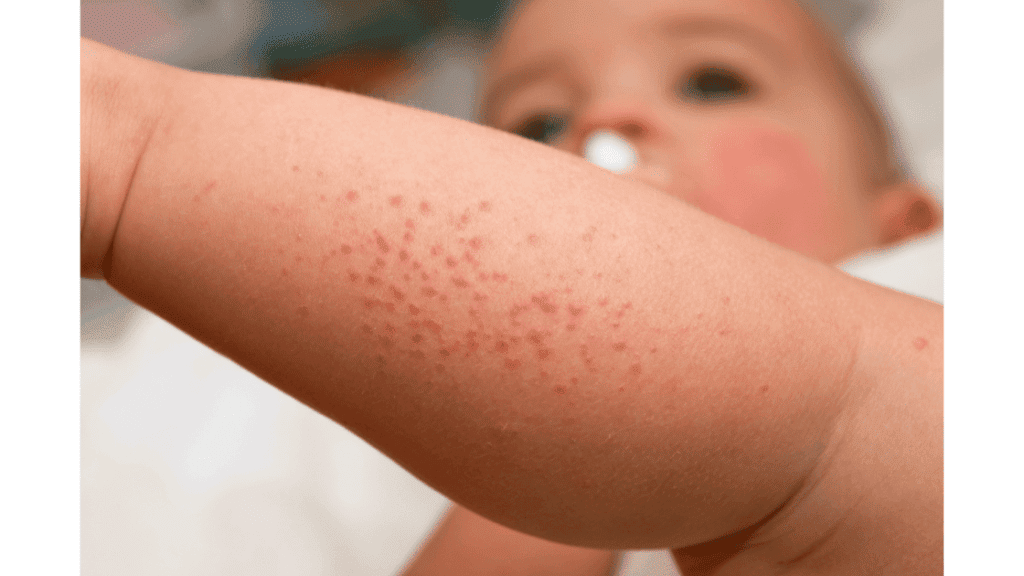
Eczema is super common among children, with 50% of infants being affected in their first year of life. Even though there are over-the-counter creams you can use to relieve the symptoms of eczema, using a natural remedy is always best for your kids.
Giving your child a baby milk bath with breast milk can not only relieve symptoms but may even be able to heal them as well. It’s also been proven that breast milk helps to heal eczema. A 2015 study has shown that breast milk was found to be as effective as hydrocortisone 1% for the treatment of mild to moderate eczema.
Just like eczema, breast milk may be able to relieve symptoms of cradle cap, as well as psoriasis.
Hydrates Dry Skin
Breast milk works as a moisturizer keeping skin soft and hydrated. It’s able to do this because of all the nutrients it contains. Breast milk contains vaccenic acid, linoleic acid, palmitic acid, and oleic acid, as well as other vitamins that are essential for dry skin.
Giving your baby a milk bath can heal their dry, flakey newborn skin, as well as lighten skin spots and minimize inflammation.
Clears Acne
A breast milk bath can help clear acne for either you or your little one. Baby acne is common in the first few years of life, and, although it’s normal, it can cause irritation.
A baby milk bath can definitely help with that. Breast milk contains lauric acid, which has antibacterial properties that can prevent and get rid of acne.
Lauric acid promotes faster healing and keeps the skin from creating bacteria and infection. It’s also great for improving the sight of discoloration and spots on the skin.
Soothes a Diaper Rash
Due to the antibodies found in breast milk, a baby milk bath can heal a diaper rash quickly by attacking and destroying the bacteria on the diaper area.
It has been proven in a 2013 study that breast milk is just as effective as hydrocortisone used to treat diaper rashes on babies.
Heals Minor Burns, Cuts, and Insect Bites
Breast milk is packed with immunoglobulin A (IgA). IgA contains antibodies that cure infection and fight off bacteria. Placing these antibodies directly on ruptured or burned skin can relieve soreness and even some pain related to these ailments.
Breast milk is truly amazing!
How to Make a Baby Milk Bath
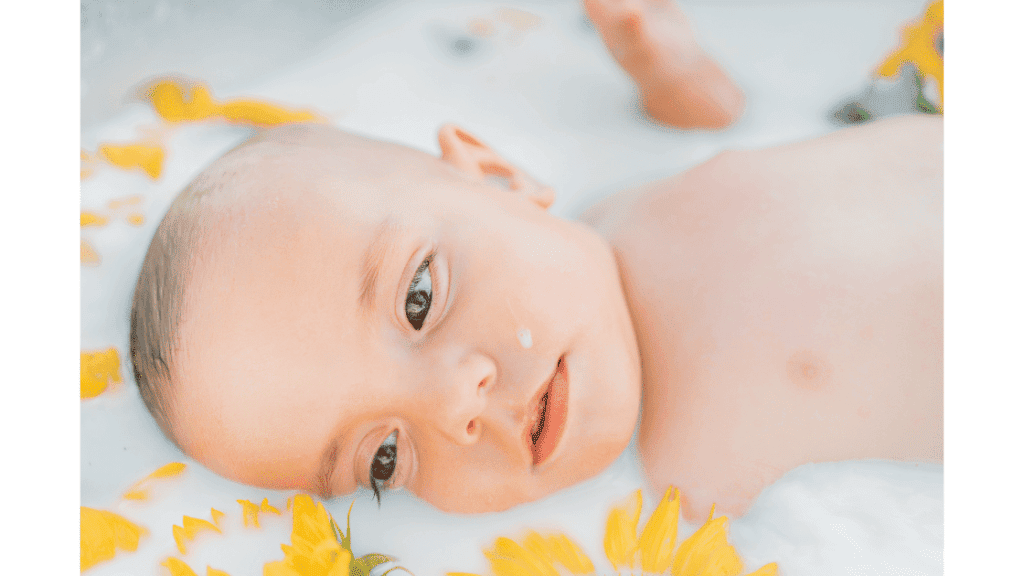
Giving your baby a milk bath is super simple. Whether you’re bathing your baby in breast milk, or any other kind of milk, making a baby milk bath is as easy as adding milk to warm bath water.
Follow these steps below to ensure you do it correctly:
- Fill a baby bathtub with warm water – temperature around 100 degrees Fahrenheit.
- Add 6-10 ounces of breast milk to the bath water. The water should be cloudy, or similar to the appearance of skimmed milk. It’s okay if the water is a bit see-through, but it shouldn’t be too clear.
- Place your baby in the tub and let them soak for 5-15 minutes.
- Rinse over your baby’s entire body including head and face. Gently dab the face rather than pour the water over your baby’s head.
- Remove your baby from the bathtub and gently pat him dry. This will allow your child’s body to absorb more of the milk.
- Apply moisturizers – lotions, oils, etc. for excess hydration.
Baby Milk Bath Tips
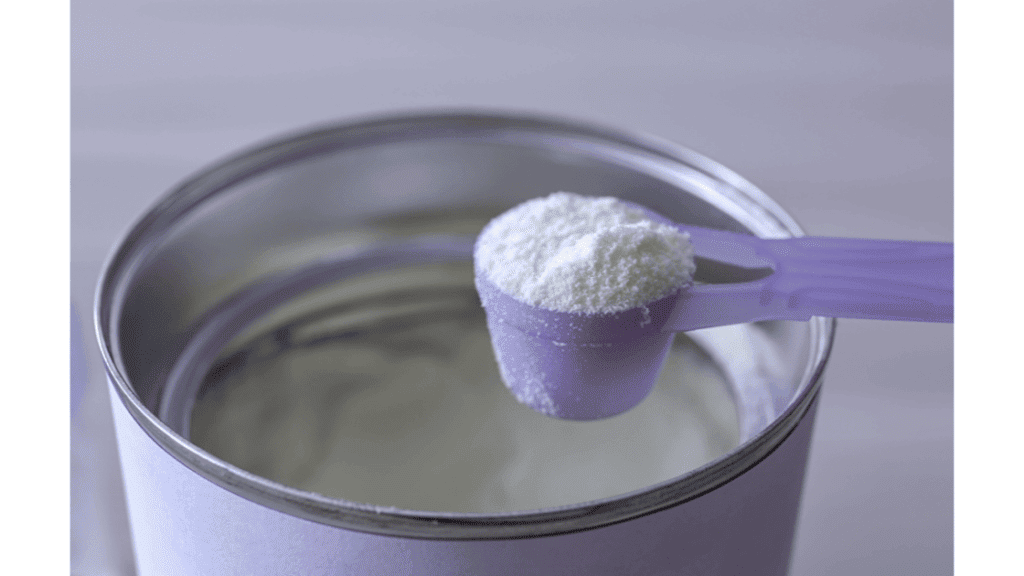
- If the water isn’t as milky as you’d like, it’s perfectly fine to add more milk. Likewise, add more water if it’s too milky for you.
- Feel free to use any other milk other than breast milk. This can be cow’s milk, coconut milk, soy milk, skimmed milk, powdered milk, or any other milk that you and your baby are happy with.
- If you prefer to use a different type of milk, make sure it’s at room temperature. If it’s too cold, it could make the bath water cold for your little one.
- Frozen breast milk is fine to use as long as it’s thawed out.
- Expired milk is also fine as long as it doesn’t stink or isn’t chunky.
- Do not use any type of milk that your baby is allergic to, as the allergen can trigger their skin.
- Give your baby a milk bath once or twice a week or whenever you have milk to use.
Other Ways to Use Breast Milk Besides a Baby Milk Bath
Breast milk contains a long list of active germ-fighting and health-promoting ingredients. Breast milk provides outstanding protection against infection and disease as your baby gets bigger.
This isn’t such a surprise considering what breast milk is made up of. Human milk is packed with vitamins, nutrients and fats, some of which include lauric acid, immunoglobulin A, palmitic acid, and oleic acid. These are just a few of the many ingredients that breast milk contains.
One drop of breast milk contains around one million white blood cells. These blood cells are called macrophages and are responsible for destroying bacteria, as well as other harmful organisms found in and on your body.
Another amazing ingredient found in breast milk is lauric acid. Lauric acid is a skin-softening fatty acid. It’s also naturally antimicrobial. Immunoglobulin A is also notably recognized in breast milk.
IgA is an antibody blood protein that protects a baby’s immature intestinal lining by coating it and preventing germs from entering. IgA is especially present in colostrum – the milk that comes in the first few days after giving birth.
There are so many other important ingredients to mention that make up breast milk, but these are the most beneficial. And this is why there are so many other ways you can use breast milk. Some of these include:
Teething Pain
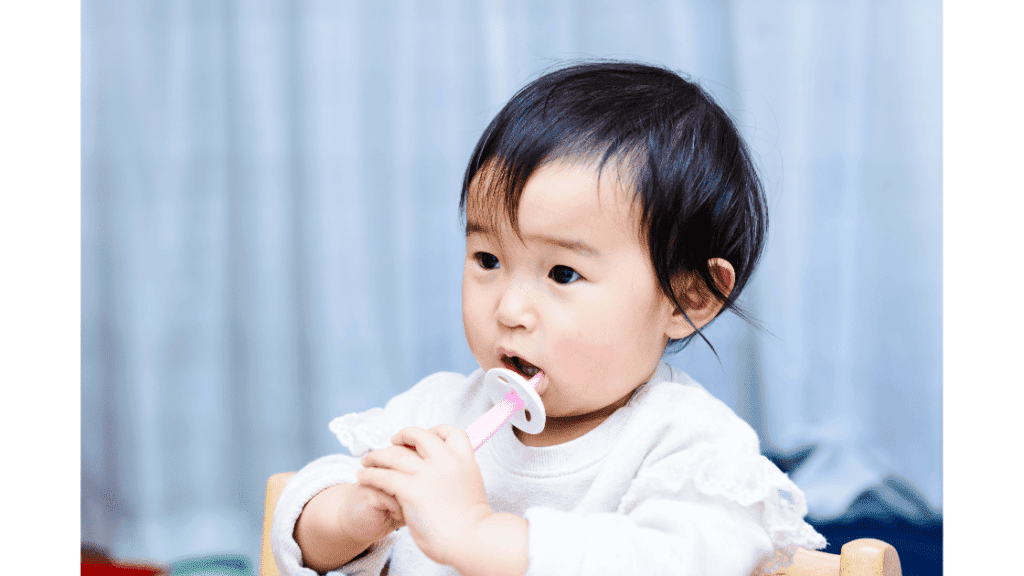
Breast milk is anti-inflammatory, which can help soothe sore and swollen gums. Not only this but just breastfeeding your child soothes them and makes them forget about the pain in their gums.
Another thing you can do is to make your child popsicles out of breast milk. Pour your fresh breast milk into molds and freeze them. These will be so much better than actual popsicles.
Ear Infections
Ear Infections are so common in young children, especially around 6-18 months of age. It’s actually been shown that antibiotic use in children is used mostly to treat ear Infections.
Antibiotics are fine to use when needed, but if there’s a natural remedy that can be used, it’s always better to try that out first. And, that’s where breast milk comes in. Antibodies in breast milk are strong enough to fight off common ear infections found in children.
You can do this by inserting about 3 to 4 drops of breast milk at the entrance of the ear canal every few hours. If done correctly, the infection should clear within 24 to 48 hours.
It’s important to mention that you should always see your doctor before diagnosing or treating your child with any sort of natural or home remedy.
Blocked Tear Ducts
Blocked tear ducts are among the most common infections found in newborns. Doctors often prescribe eye drops for parents to pick up right after birth.
Tear ducts can easily be blocked with new babies and can leave them with watery eyes full of discharge. Most of the time, blocked tear ducts clear up on their own and only need to be cleaned when discharge builds up.
However, sometimes a blocked tear duct can lead to infection and heavy eye discharge. It’s recommended that a blocked tear duct be cleaned with plain water or saline solution until healed.
Though adding a few drops of breast milk throughout the day may help prevent infection and heavy discharge. Breast milk has plenty of antibodies that help heal and prevent these kinds of infections.
Sore Nipples

This one’s especially for the moms who are breastfeeding and going through the pain. I’m sure we have all dealt with dry, chapped nipples in the first weeks of breastfeeding. The pain is unbearable.
You can always use creams prescribed to heal sore nipples, but breast milk works best to heal them naturally. And, you’ll also feel better knowing that your baby isn’t consuming any of those medicines you’re applying.
Conclusion
From what you’ve learned here, a baby milk bath is great for your little one and has so many benefits for their skin. There isn’t a reason not to try it.
Your baby will love a nice soothing milk bath and will be calm and relaxed once they’re done. So, if you’ve got some extra breast milk to spare, use it for a baby milk bath. You’ll love how much softer your little one is afterward.

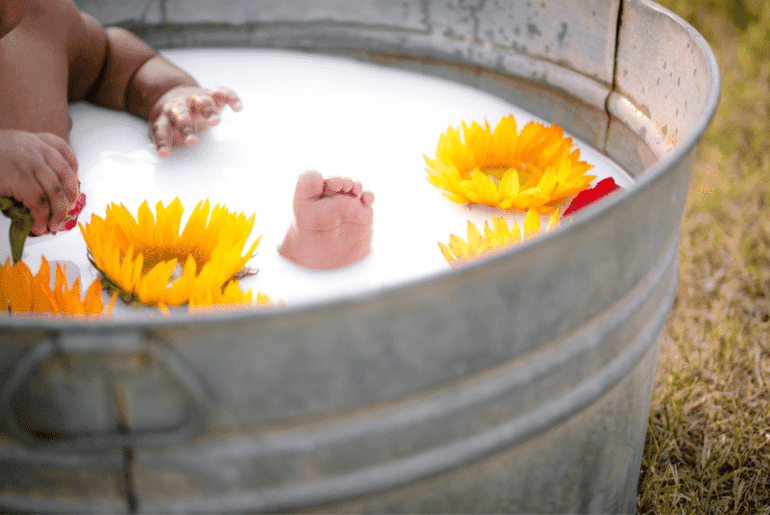




Comments are closed.